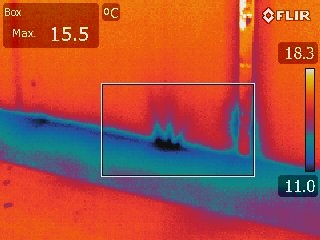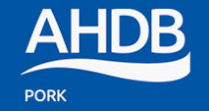Draughts in the lying area

What To Look For:
This wasn’t found on many units in this project - but where it was, there was a significantly higher chance of tail biting.
Look for visible signs of draughts such as patterns in the dust, movement of straw, pigs’ hair etc, as well as checking detection of draughts whilst inside the pen, especially in the lying area. Look at lying pattern of pigs – are areas of the designated lying area avoided?
(still have't got a picture for this one)
Additional information:
Look for visible signs of draughts such as patterns in the dust, movement of straw, pigs’ hair, etc, as well as checking detection of draughts while inside the pen, especially in the lying area. Look at lying pattern of pigs – are areas of the designated lying area avoided?
Cold air falling on to resting pigs will make them uncomfortable. Check that air from outside does not flow directly down walls and onto resting animals, particularly in cooler weather. The day and night resting patterns of the pigs’ should be observed (either directly, or by observation of dunging patterns when checking animals in the morning), as this can indicate the presence of draughts. Draughts will reduce the comfort of the lying area, and pigs may start to using avoid it. Intermittent draughts will disturb the resting behaviour of the pigs; causing discomfort and irritation as pigs end up lying on other pigs. Pigs becoming uncomfortable will in turn disturb resting animals.
Suggestions:
Whilst draughts at any time will be disruptive, extra care should be taken to reduce draughts where there is a big difference between outdoor (cold) and indoor (warmer) temperatures. Draughts in late winter / early spring will therefore be more important to address.
Additional draught reduction measures (permanent or temporary) could be:
- Filling of gaps in outer walls
- The addition of gale break or other material to reduce air speed and allow air to warm as it enters the pen
- Installation of kennel lids or partial lids to deflect air flowing down pen walls
- Full straw bales can be used to create internal walls
- Correct air flow pattern around the pen is vital to ensure that warmed air moves slowly around the lying area, rather than direct influx of cold air
- When weather patterns indicate higher chance of cold draughts, increase straw provision overnight to allow the pigs to create more sheltered areas for undisturbed rest
- Ensure that weekend workers have clear instructions on straw provision and ventilation settings
Additional material:
Action for productivity 21. Ventilation http://pork.ahdb.org.uk/media/2048/Action-21-Ventilation.pdf
AHDB Pork Ventilation Guide http://pork.ahdb.org.uk/environment-buildings/pig-buildings-housing-development/ventilation/ventilating-pig-buildings-guide/
